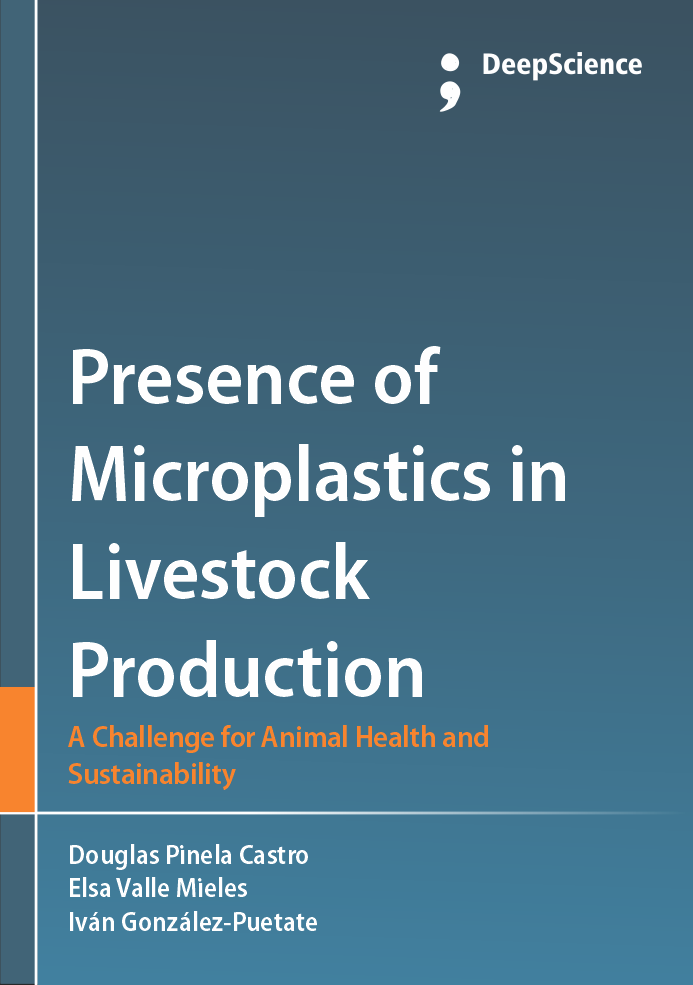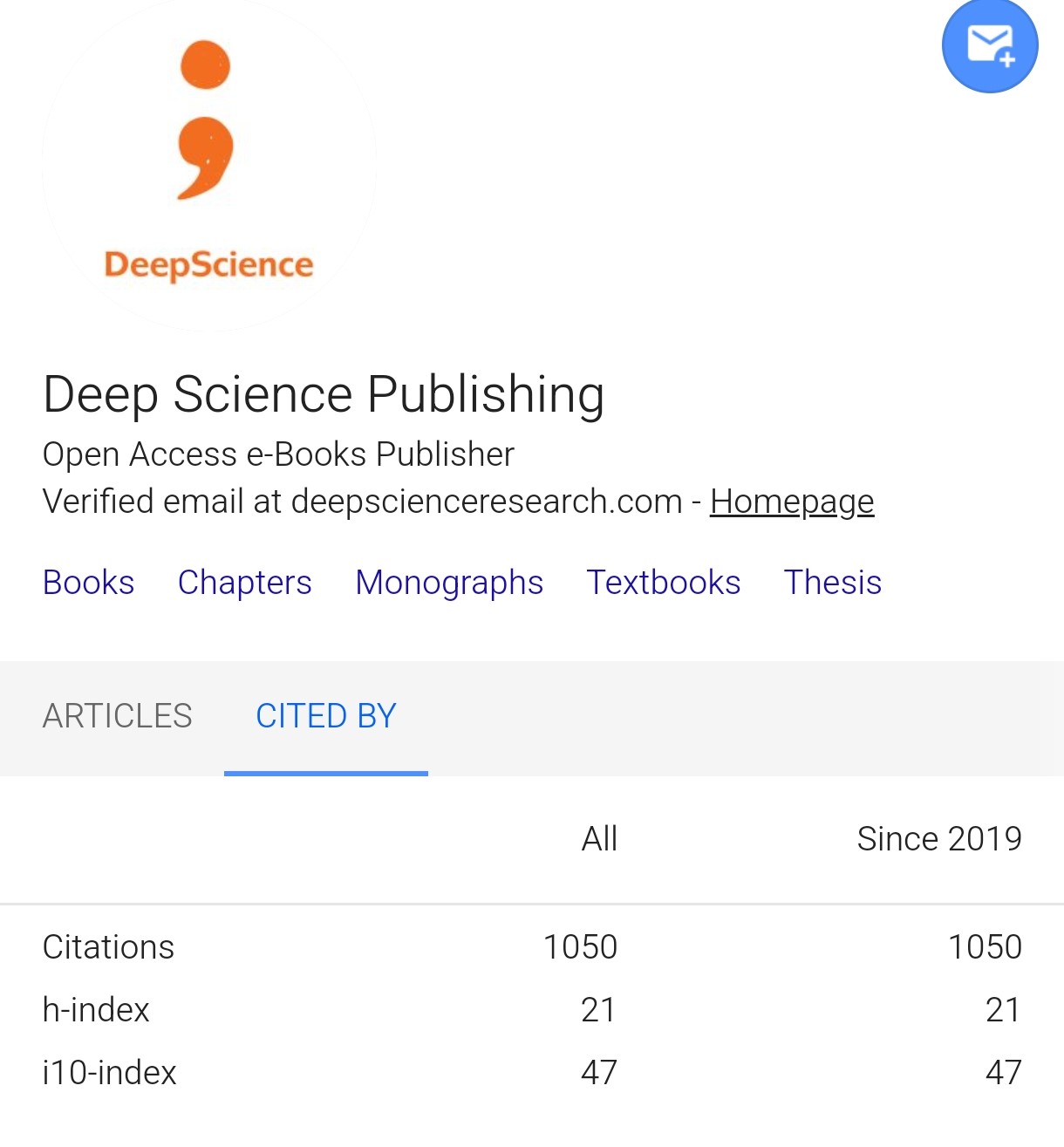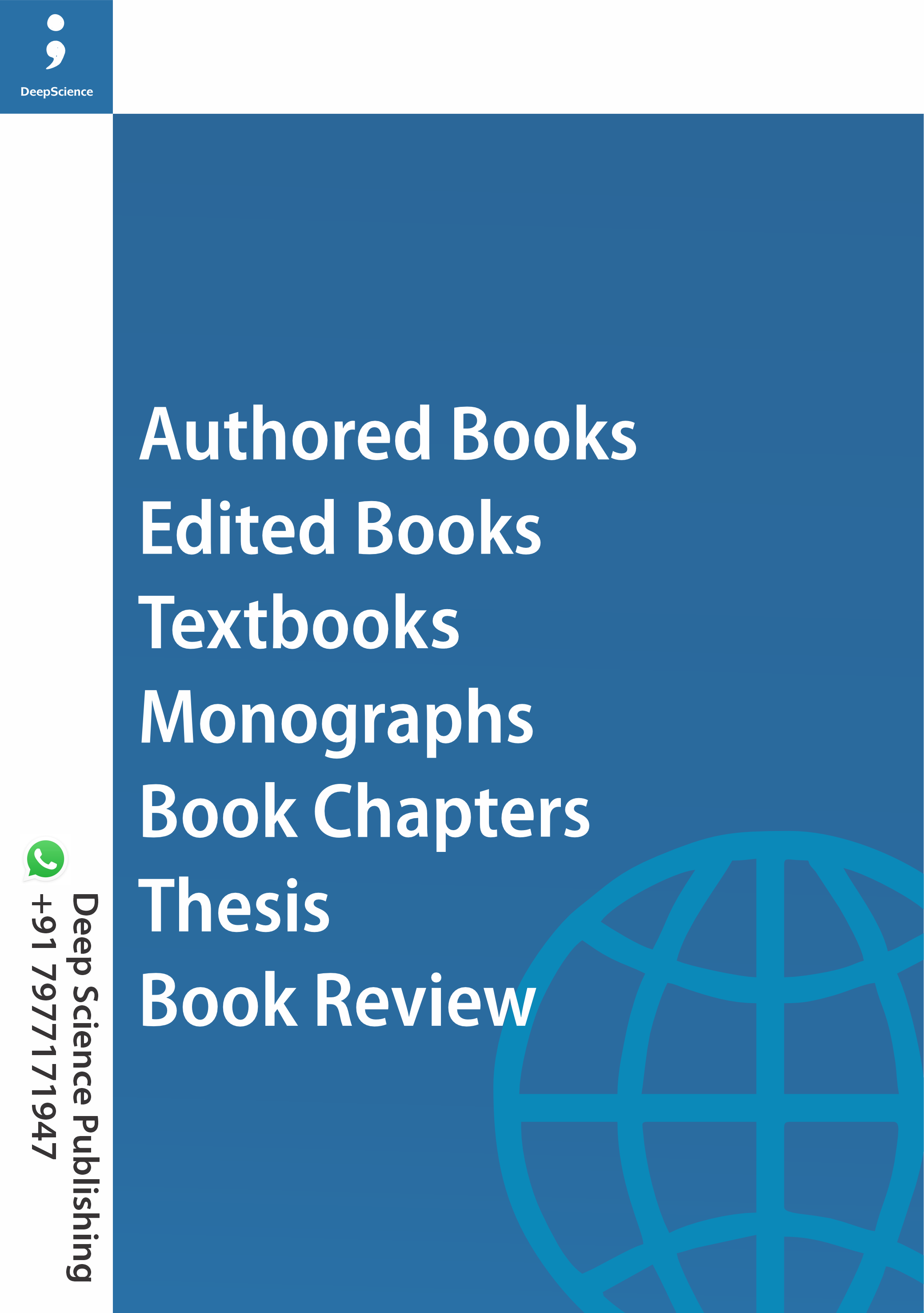Presence of Microplastics in Livestock Production: A Challenge for Animal Health and Sustainability
Keywords:
Microplastics, Fibers, Fragments, Contamination, Colours, Pigs, Environmental sustainabilitySynopsis
The impact of the emissions of fossil fuel as well as biological, physical, chemical, non-degradable pollutants is a question of general interest for all the human beings and it influences the industry, agriculture, and livestock. Within this frame, the impact of microplastics on the terrestrial environment and the water body (both the open sea and inland waters) attracts considerable interest. Various investigations have shown their presence in oceans, and their effects on marine fauna, as well as their impact on agricultural systems, in animal health and productive sustainability. However, this issue has received less attention in recent years.
This work presents a series of basic research studies on microplastic pollution in various farming systems located in Guayas Province, Ecuador. The production segments studied were sheep, goats, pigs, horses, and feed for livestock.
Environmental factors affect the health and balance of ecosystems, the welfare of animals, and the sustainability of production methods. However, the specific properties of these variables that would allow for their adequate description remain unknown. The aim of this study was to estimate a baseline and quantify these environmental factors as an initial step to reduce or eliminate them.
Studies are needed to provide a baseline for a frame of reference to be used for comparison from which corrective action, mitigation, and technological applications can be determined. For this reason, the aim of the research is to identify microplastics as emerging relevant pollutants in animal husbandry. These materials are present in the water, food and living environment, and are harmful to the animal health and food safety.
The rationale of this study was based on the need to provide sound and technical guidelines for a preliminary evaluation of environmental risk in the rich agricultural frontiers of Province of Guayas.
The field trials thus generated invaluable data to guide the strategic decisions about the collection and dispatch of samples to the reference laboratories. It produced a set of useful observations that can be used to diagnose how microplastics get into and impact agroecosystems.
This study illustrates not only the prevalence of microplastics in our livestock systems, but also the urgent need for comprehensive detection methods. These baseline studies constitute an important scientific and technological contribution, providing essential tools for producers, researchers, and policymakers responsible for environmental sustainability.
Through its chapters, the present work intends to inform and stimulate more responsible action to improve aspects of the welfare of farmed animals and health of natural areas in the agricultural production region but also to reflect on the nature of the collective liability when it comes to the management of plastic waste that could lead to the reduction of this impact.
The authors present a situational diagnosis informed by scientific knowledge, highlighting the scope of this environmental issue in a specific sector of the Ecuadorian coast. This is how we leave for the generations to come a more responsible and fair future for our production environment.
Chapters
References
Acuerdo ministerial 19 de 2014. Políticas para gestión integral de plásticos en el Ecuador. 03 de abril de 2014. Registro Oficial 218.
Alcocer García, A., Guevara Lam, K.D., Mora Giles, K.D. (2019). El riesgo de la ingesta de nanoplásticos por el consumo de mariscos en la ciudad de Ensenada. https://www.researchgate.net/profile/Alicia-Alcocer/publication/341602336
Añaños Mendoza, D.M. (2024). Microplásticos en el tracto digestivo de Creagrutus yanatili "sardinilla" y Rhamdia quelen “bagre”, del rio Huarpa, Huanta - Ayacucho 2023. https://repositorio.unsch.edu.pe
Arboleda, I., Molina, G., Duque, G. (2024). Influencia de las condiciones ambientales sobre la distribución y tipos de microplásticos en aguas superficiales en la bahía de Tumaco, Pacífico colombiano. Boletín de Investigaciones Marinas y Costeras, 53(1), 65–68. http://boletin.invemar.org.co
Ayora, C., Pinzón, N. (2024). Análisis de la existencia de microplásticos en equinos en la provincia del Guayas, Ecuador. [Tesis de grado, Universidad de Guayaquil].
Barboza, L.G.A., Vieira, L.R., Branco, V., Figueiredo, N., Carvalho, F., Carvalho, C., Guilhermino, L. (2018). Microplastics cause neurotoxicity, oxidative damage and energy-related changes and interact with the bioaccumulation of mercury in the European seabass. Aquatic Toxicology, 195, 49–57.
Barros Leon, R.A., Castro Moran, M.C. (2024). Construcción de un filtro piloto para reducir la contaminación por microplástico en las aguas del Parque Histórico de Samborondón. https://dspace.ups.edu.ec
Betancourt Sánchez, G., Daza Rodríguez, E. (2023). Análisis de los efectos que produce en los seres humanos la presencia de microplásticos en la cadena alimentaria. Universidad Cooperativa de Colombia.
Bollain Pastor, C., Vicente Agullo, D. (2020). Presencia de microplásticos en aguas y su potencial impacto en la salud pública. Revista Española de Salud Pública.
Buteler, M. (2019). ¿Qué es la contaminación por plástico y por qué nos afecta a todos? Revista Desde la Patagonia. Difundiendo Saberes, 28, 1–5.
Castañeta, G., Gutiérrez, A.F., Nacaratte, F., Manzano, C.A. (2020). Microplásticos: un contaminante que crece en todas las esferas ambientales. Revista Boliviana de Química.
Chusan, J.P., Cruz, M.F. (2023). Evaluación de la presencia de microplásticos en bovinos del sector de Chongón - Guayas, Ecuador. Universidad de Guayaquil.
Cisneros, P., Montero, P., Guevara, M. (2021). Registro de fragmentos y fibras de plástico en sedimentos marinos, Tumbes, Perú. Instituto del Mar del Perú.
Crawford, C., Quinn, B. (2017). Microplastic pollutants. Elsevier.
Cruz, A., Alvarez, J., Martínez, C., Enríquez, R. (2020). Cuantificación y caracterización de microplásticos y residuos sólidos urbanos en Playa Zipolite, Oaxaca. Ciencia y Mar.
Flores, J., Orozco Gualoto, K. (2022). Evaluación de la presencia de microplásticos en agua embotellada en la regional 6. Universidad Politécnica Salesiana.
García, J.G. (2023). Niveles de sustitución de un nutriente de origen energético arroz partido por maíz en la alimentación de cerdos. Universidad Técnica de Babahoyo.
Giráldez, L., Braz, F., Lacerda, A., Ferraz Bastos, L.E., Moura de Souza, D.A., Gonçalves da Silva, D. (2020). Efectos de los microplásticos en el medio ambiente. Revista Cubana de Salud y Trabajo, 33(1), 100–107.
González-Puetate, I.R., Martínez Cepeda, G.E., Torres Lasso, P., Chávez Toledo, K.N., Guevara Enrique, G. (2024). Microplásticos en materia fecal de rumiantes en Ecuador. Ciencia Veterinaria, 26(2), 114–129.
Julià Smit, M. (2020). Estudio de la ingesta de microplásticos en doradas expuestas a una dieta enriquecida con plásticos. Universitat de les Illes Balears.
Lema, E. (2021). Bioplásticos a partir de residuos del cacao. Ingeniería e Innovación, 9(1).
León, D., Peñalver, P., Franco, E., Benfatti, E., Comes, L., Ciudad, C., Muñoz, M., Güemes, F., Serrano, L., Parrilla, R. (2020). Protocolo para la planificación, muestreo, análisis e identificación de microplásticos en ríos. Proyecto LIBERA.
Lino, J.G. (2019). Microplástico en el tracto digestivo de Scomber japonicus y otros peces. Universidad Estatal Península de Santa Elena.
Loaiza Arcila, D.S. (2022). Análisis de la aplicación de microorganismos para la degradación de plásticos. Universidad de América.
Löder, M., Kuczera, M., Mintenig, S., Lorenz, C., Gerdts, G. (2015). Infrared imaging for microplastics analysis. Marine Pollution Bulletin.
López, F., Fermín, I. (2019). Microplásticos en el ambiente marino. Universidad de Oriente, Venezuela.
Luna, A. (2020). La era del plástico. Talenbook.
Mariano, S., Tacconi, S., Fidaleo, M., Rossi, M., Dini, L. (2021). Micro and nanoplastics identification: Classic methods and innovative techniques. Frontiers in Toxicology, 3, 636640.
Martínez Velásquez, N. (2024). Migración rural y cambio de hábitos. Revista Digital UNAM.
Mazzoleni, S., Lin, P., Luciano, A., Tretola, M., Pinotti, L. (2023). Detection of microplastics in feces of pigs. International Feed Conference.
Miller, R.Z., Winslow, B., Kapp, K., Osborne, A., Gwinnett, C. (2024). Microplastic and microfiber pollution in the East River and Long Island Sound. Science of the Total Environment.
Moreira, C.D. (2021). Efecto de la incorporación de vísceras de pollo en la alimentación de cerdos. Universidad Estatal Península de Santa Elena.
Murray, G., Serrano Medrano, M., Miranda Ackerman, M.A. (2021). Una inundación global de plásticos. Revista Digital Universitaria.
Obaco, B.A., Pin Lopez, K.A. (2022). Detección de microplásticos en heces de perros y gatos de Durán. Universidad de Guayaquil.
ONU (2021). Informe sobre contaminación por plásticos. Programa de las Naciones Unidas para el Medio Ambiente. https://www.unep.org
Orbegozo, L.J. (2023). Conocimiento y actitud ecológica frente a la contaminación por plásticos. Universidad Nacional del Callao.
Peñafiel, M.G., Peñafiel Roman, B.G. (2023). Evaluación de la presencia de microplásticos en cerdos. Universidad de Guayaquil.
Purca, S., Henostroza, A. (2017). Presencia de microplásticos en playas arenosas de Perú. Revista Peruana de Biología, 24(1), 101–106.
Rivas, J., Gracia Cortés, M., Gómez Bolaños, J.R. (2023). Los plásticos y el daño a la salud. Biocenosis. Revista Ambiental.
Rivera, E., Martínez Gallegos, S., Macedo Miranda, M.G., Illescas, J. (2023). Microplásticos: un nuevo tipo de contaminantes emergentes. Materiales Avanzados, 1(39), 48–59.
Rojo, E., Montoto, T. (2017). Basuras marinas, plásticos y microplásticos: orígenes, impactos y consecuencias. Ecologistas en Acción.
Sánchez, M., Guanoluisa Tituaña, D.S. (2024). Evaluación de la presencia de microplásticos en cabras en un cantón de Manabí. Universidad de Guayaquil.
Segarra, D.I. (2023). Identificación y análisis de microplásticos en la zona costera de Playas. Universidad del Pacífico, Ecuador.
Torrez, K.A., Cervantes, O., Reyes, J., Olivos-Ortiz, A. (2021). Clasificación de microplásticos en playas de Colima y Jalisco. Costas, 2(3), 199–222.
Yang, H., Chen, G., Wang, J. (2021). Microplastics in the marine environment: sources, fates, and impacts. Toxics, 9(2), 41.













